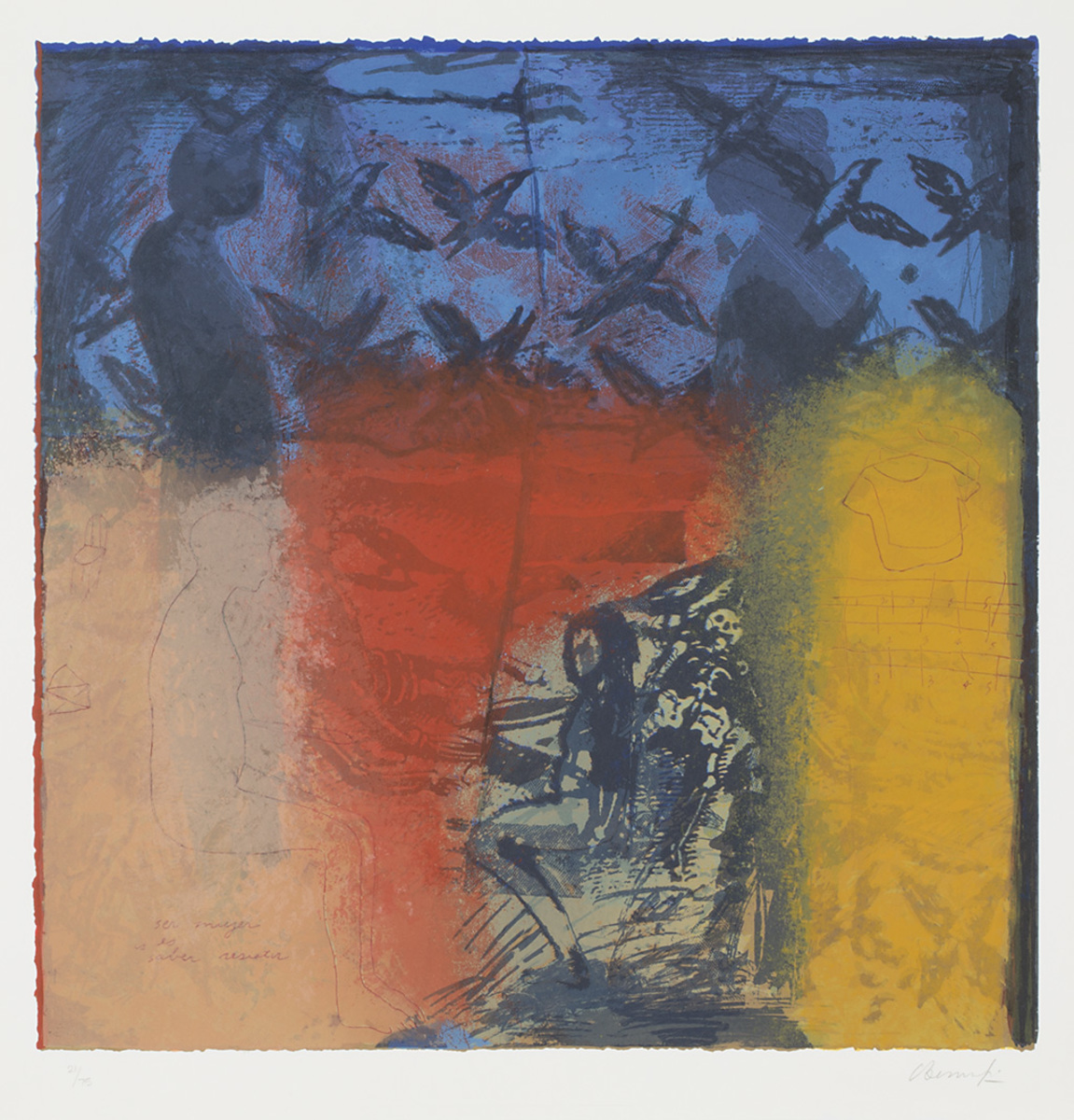
Ser Mujer Es Saber Resistir
Claudia Bernardi was born in Buenos Aires, Argentina. There, she experienced firsthand the country’s “Dirty War.” This period of state terrorism lasted from 1976 to 1983. At least 30,000 of the regime’s political opponents were “disappeared” by death squads supported by the country’s military dictatorship. Bernardi left Argentina in 1979, but returned several years later in a team of forensic archaeologists. The group worked to exhume mass graves, create archaeological maps, and record testimonies of survivors and witnesses. Bernardi’s art often features layers of semi-transparent swaths of color and imagery. This technique imitates the layers of the earth seen in archaeological digs. This print was inspired by Bernardi’s experience at a site in Ethiopia. It features her distinctive layers of color, as well as imagery such as human figures, skeletons, clothes, and furniture. These suggest the remnants of human life found at an archaeological dig or mass burial site. In the midst of such somber imagery, the title is a reminder that is both solemn and resolute. “Ser mujer es saber resistir” in Spanish means “to be a woman is to know how to resist.”
Exhibitions:
Claudia Bernardi, Argentinian, born 1955
Ser Mujer Es Saber Resistir, 1995
Print | Screen print on paper
Gift of the Women’s Studies Program WSU


